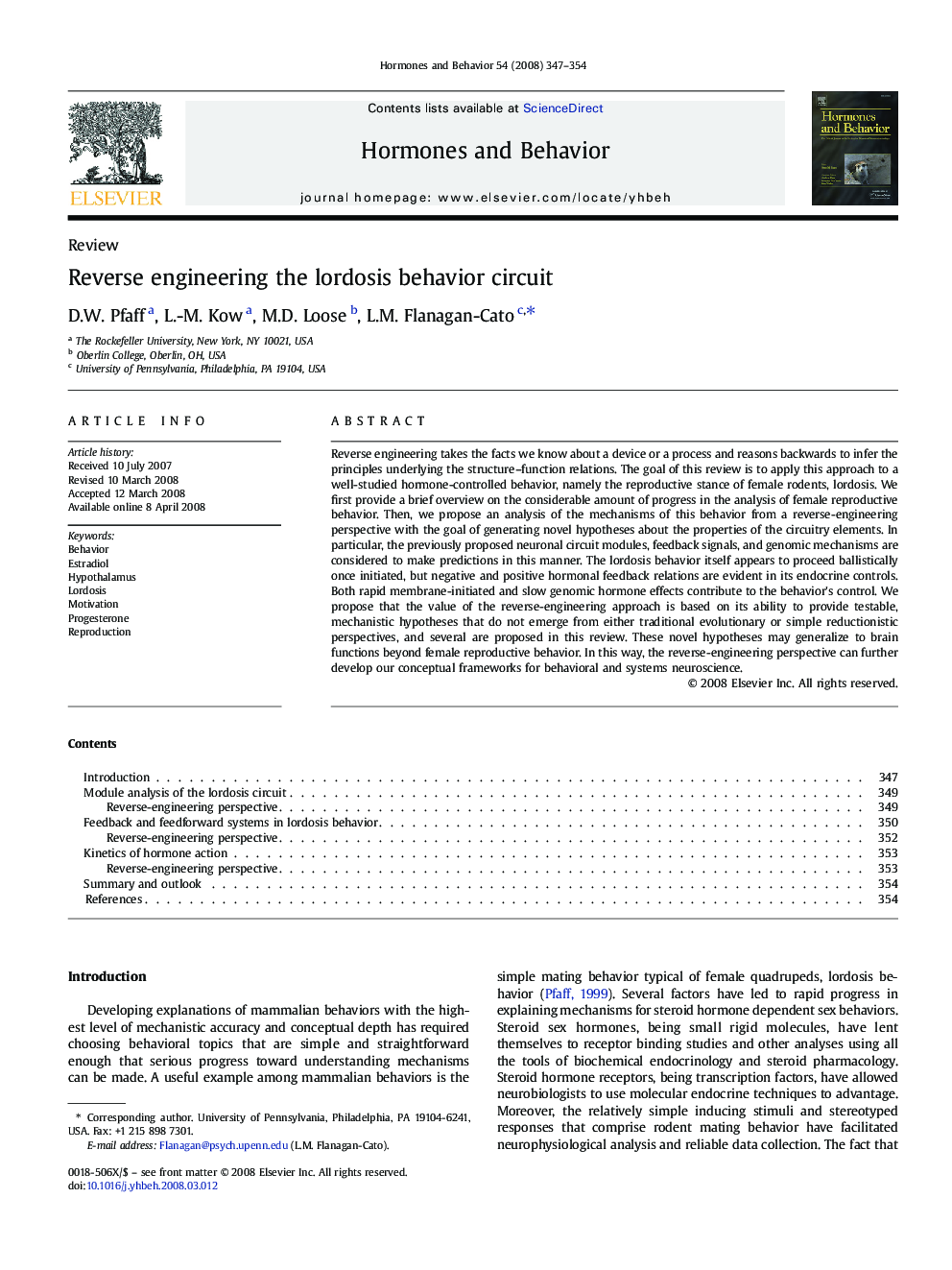| Article ID | Journal | Published Year | Pages | File Type |
|---|---|---|---|---|
| 322877 | Hormones and Behavior | 2008 | 8 Pages |
Reverse engineering takes the facts we know about a device or a process and reasons backwards to infer the principles underlying the structure–function relations. The goal of this review is to apply this approach to a well-studied hormone-controlled behavior, namely the reproductive stance of female rodents, lordosis. We first provide a brief overview on the considerable amount of progress in the analysis of female reproductive behavior. Then, we propose an analysis of the mechanisms of this behavior from a reverse-engineering perspective with the goal of generating novel hypotheses about the properties of the circuitry elements. In particular, the previously proposed neuronal circuit modules, feedback signals, and genomic mechanisms are considered to make predictions in this manner. The lordosis behavior itself appears to proceed ballistically once initiated, but negative and positive hormonal feedback relations are evident in its endocrine controls. Both rapid membrane-initiated and slow genomic hormone effects contribute to the behavior's control. We propose that the value of the reverse-engineering approach is based on its ability to provide testable, mechanistic hypotheses that do not emerge from either traditional evolutionary or simple reductionistic perspectives, and several are proposed in this review. These novel hypotheses may generalize to brain functions beyond female reproductive behavior. In this way, the reverse-engineering perspective can further develop our conceptual frameworks for behavioral and systems neuroscience.
